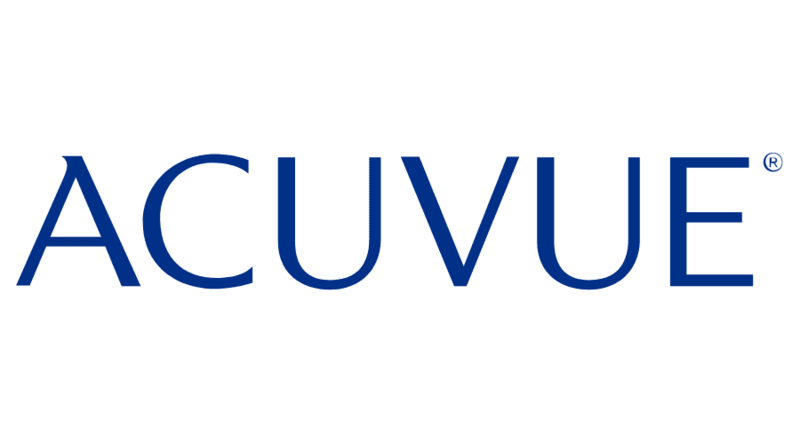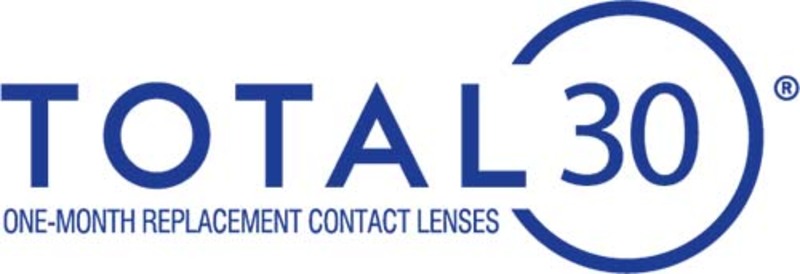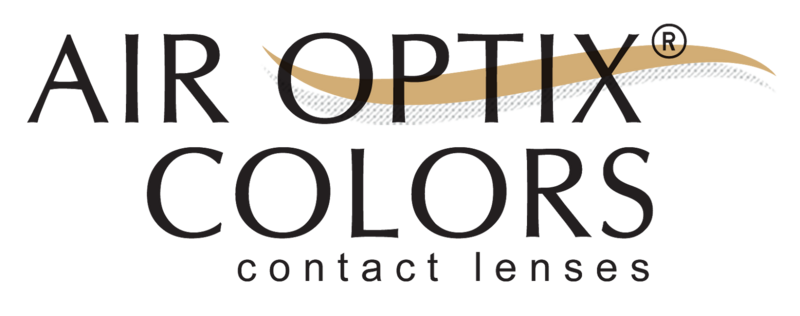Best Contact Lenses
Whether you've just learned that you have subpar vision, or are switching from glasses or another contact brand, looking for new contact lenses can be an overwhelming task. Since the perfect contact lens will vary depending on your individual needs and preferences, there is no single "best" contact lens. However, when deciding on the right set of contacts for your situation, there are a few things to keep in mind.
This article discusses the best contacts on the market today. We consider how different contacts may be more suitable depending on the shape and condition of your eyes, the price of the lenses and how often you'll have to sanitize them. We'll also provide a guide on contact lenses, including how they work and the different types available.
Our Top Picks For The Best Contact Lenses
- Best Daily Contact Lenses: 1-Day Acuvue Moist
- Best Monthly Contact Lenses: TOTAL30
- Most Color Options: AIR OPTIX COLORS
- Best For Sensitive Eyes: Extreme H2O
- Best Astigmatism Contacts: Bausch and Lomb Ultra Multifocal
Best Contact Lenses Reviews
Why we chose it: 1-Day Acuvue Moist contacts are not only hydrating and comfortable, but they are some of the best-fitting daily lenses for a wide range of eye shapes.
1-Day Acuvue Moist is a type of daily disposable contact lens manufactured by Johnson & Johnson Vision Care. These lenses are made of etafilcon A, a special substance that has been specifically created to provide high levels of oxygen permeability and moisture retention.
As the name implies, these are daily disposable contact lenses. This has advantages and disadvantages.
Many eye doctors often recommend daily disposable contacts for first-time contact lens wearers. The reason is that new users are more prone to overwearing their longer use contacts, which can lead to a number of serious eye conditions like infections and bacterial ulcers.
As with most daily disposable contact lenses, however, 1-Day Acuvue Moist lenses are less affordable than other types. Contributing to the cost is the amount of packaging required.
Another key feature of the 1-Day Acuvue Moist contact lenses is the company's two-base curve technology, which allows for a more precise fit on the cornea. The two-base curve design also improves the visual acuity of the lens, which can help to reduce visual distortions and provide clearer, sharper vision. Note that these two-base curve contact lenses are typically prescribed by an eye care professional and may require a special fitting process to ensure proper alignment and comfort.
Why we chose it: We chose Alcon Total 30 contact lenses because they are designed to provide exceptional comfort as well as UV protection for up to a month, even for people with sensitive eyes.
Alcon Total30 is the first and only monthly replaceable water gradient contact lens. The company's gradient technology ensures that the surface of the lens is highly moisturized and comfortable for long periods.
Additionally, the TOTAL30 contact lens is the most breathable contact on the market. The surface of the lens closely resembles the human cornea's softness while also being strong enough to withstand 30 days of usage.
Alcon TOTAL30 contact lenses offer Class I UV protection, which means that they filter out over 90% of UV rays. (Note that this does not mean they are substitutes for sunglasses with UV protection.)
Even with an extended usage period, the Alcon TOTAL30 still maintains relatively high water content. This means that more oxygen will pass through the lens to the cornea. However, on the downside, Alcon TOTAL30 contacts have no multifocal lens option, making them ineffective for anyone with presbyopia. And because these are monthly lenses, they require storage and sanitization for regular cleaning.
Why we chose it: AIR OPTIX COLORS contact lenses are available in many colors, but still provide a natural look. These contact lenses can be a fun and easy way to change up your appearance.
AIR OPTIX COLORS can be used to make everything from subtle enhancements to dramatic color changes. They feature a unique 3-in-1 color technology that blends seamlessly with your natural eye color.
The most outstanding attribute of the AIR OPTIX COLORS is their breathability compared to other options. While most colored contact lenses are thicker, more rigid and less breathable, AIR OPTIX COLORS were designed to allow more oxygen to permeate your eye making them much more breathable than other leading brands.
Also, according to customer reviewers, this contact lens is easy to insert. So if you're new to contacts, this option may be a good choice for you.
Why we chose it: Extreme H2O lenses have the technology to ensure maximum comfort for those with sensitive or dry eyes. Their lenses feature a patented edge design that helps to reduce friction and irritation during lens wear. This can help to prevent redness and discomfort, especially during extended periods.
Extreme H2O contact lenses come in daily, weekly and monthly options. This allows you to weigh the pros and cons of these different types of lenses to decide what's best for your lifestyle.
Additionally, Extreme H2O lenses are made using hioxifilicon D, a special material that has naturally hydrophilic properties and enables the lenses to retain 99% of their moisture. The hydrophilic properties of the Extreme H2O lenses are enhanced by their high water content and an ultra-stable copolymer, which helps prevent the lens from moving around throughout the day.
Another plus is that Extreme H2O is one of the more affordable options on the market, with a price point lower than its competitors.
However, some customers have reported these lenses are prone to tearing. Tears in your contact lens can be detrimental to your eye health as pieces of the lens could become dislodged in your eye.
Why we chose it: Bausch and Lomb Ultra Multifocal for Astigmatism contact lenses are available in a wide range of prescription options. These include for both high and low astigmatism correction, and for presbyopia, making them a versatile option for people with a variety of eye disorders.
If you have astigmatism, you'll be familiar with sensitivities that cause dryness and irritation. Made from a moisture-retaining material and designed to reduce the impact of lens rotation, the Ultra Multifocal can handle these complications better than other available lenses. The Bausch and Lomb Ultra Multifocal's moisture seal technology helps to retain moisture for up to 16 hours.
These lenses also feature a unique design that stabilizes the lens when it's on your eye. While other lenses may give you discomfort when you blink or move your eyes around, these lenses are made to avoid these issues and stay in place.
However, there are a number of downsides to the Bausch and Lomb Ultra Multifocal. They are more expensive than competitors, so if you're looking for affordability, the Bausch and Lomb Ultra Multifocal for Astigmatism may not be the best option for you.
Additionally, because people with astigmatism need to take extra care of their eyes, this option requires regular extra cleaning and maintenance to prevent infections and other eye problems.
Other contact lenses we considered
In deciding the five best contact lenses for 2023, we considered many other brands. When evaluated for affordability, comfort, material quality and water content, we found a few runners-up.
Here are three other brands we considered that almost made the cut.
UltraFlex 55 Toric
UltraFlex 55 Toric contact lenses by CooperVision are two-week lenses that use hydrogel, which improves comfort and hydration. Especially for those who need correction for astigmatism, these are excellent contacts for sensitive and dry eyes.
They require special fitting as they're available in multiple curve options. Although this makes them a great fit for your eyes, they may be more inconvenient than other contacts. Additionally, these lenses are more expensive than other weekly and bi-monthly options.
Acuvue Oasys
The Acuvue Oasys contacts are among the most popular disposable options. It's a daily and bi-weekly lens with Acuvue's top-tier design, which makes it both convenient and comfortable.
While the key feature of this contact lens may stand out to some, its hefty price tag kept it out of the top five.
Biofinity
Biofinity's contact lenses offer a balance of comfort and clarity. With high oxygen permeability, there is less friction between the lens and your eyelid and more moisture, resulting in comfort and hydration. These contacts also come in multiple shapes, lens types and prescription strengths so you can customize them to your needs.
Despite these positive attributes, multiple customers report that they dry out after a couple of weeks even though they're meant to last one month.
Contact Lenses Guide
Before getting contact lenses for the first time, you should schedule an eye exam with an eye care professional to determine whether you're a good candidate. You will want to ask about any risks to wearing contacts that you may not be aware of.
Additionally, before getting contacts, you should ask yourself the following questions, as they may help narrow down your options:
- Am I committed to cleaning and replacing my contacts regularly?
- Can I afford the contacts that I want?
The following information is useful for understanding your options and what to expect from contact lenses.
What are contact lenses?
A contact lens is a thin plastic lens that you place directly on the surface of your eye to correct vision. Contact lenses are typically made of soft, flexible materials that conform to the shape of the eye.
Some types of contact lenses exist to treat specific visual defects of the eye. For example, people with nearsightedness use contact lenses to combat the effect of having a misshapen cornea.
How do contact lenses work?
Contact lenses and glasses are the same in terms of function. Both contact lenses and eyeglasses work to correct the user's vision by focusing light on the back of the eye. With contacts, after the lens is in place on the eye, it refocuses light onto the retina's single focal point. It has a magnifying glass-like quality, and the light that comes into your eyes is adjusted and focused.
The main difference between contact lenses and eyeglasses is comfort, as putting a small contact lens directly on your eyeball can be irritating, and convenience, as contacts may take more effort to insert and clean than glasses.
Types of contact lenses
You can get either soft or hard contact lenses. They both serve the same purpose of correcting vision. However, they differ in material, design and maintenance.
Soft lenses
Soft contact lenses are flexible and comfortable to wear because they are constructed of a composite plastic material that resembles gel. They fit the contour of the eye and are frequently recommended for patients with mild to moderate prescriptions.
Soft contact lenses come in a variety of alternatives, including toric lenses for astigmatism, multifocal lenses for presbyopia, and colored lenses for aesthetic reasons. You can find soft contacts in daily, weekly, bi-weekly and monthly versions.
Hard lenses
Hard contact lenses, also known as rigid gas-permeable lenses, are made of a hard, oxygen-permeable plastic material. They are durable and maintain their shape on the eye, providing crisp and clear vision.
Hard contact lenses are often prescribed for people with more severe prescriptions, irregular corneas or certain eye conditions.
One of the main benefits of hard lenses is that they can last up to two years. However, they may take longer to get used to and require a more rigorous cleaning and maintenance routine.
In general, soft contact lenses are more popular due to their comfort and ease of use, while hard contact lenses are preferred for their durability and clear vision.
Best practices to follow when wearing contacts
Wearing contact lenses can be a convenient and effective way to correct vision, but it's important to follow certain best practices to protect your eye health and safety. Here are some tips to keep in mind when wearing contact lenses:
Always handle them with clean hands
Wash your hands thoroughly with soap and water before you do anything else to reduce the risk of an eye infection. Avoid soaps with additional oils or perfumes since they can adhere to a lens's surface. To avoid having debris drift into one or both of your eyes, dry your hands with tissues or a lint-free cloth.
Replace them when they are due for a replacement
When it comes to contact lenses, it's important to follow a regular cleaning and replacement schedule. Clean and disinfect your contact lenses as recommended by your eye doctor or the manufacturer and make sure to discard disposable lenses at the recommended time.
Harmful bacteria and other microbes can accumulate on your contact lenses if you don't clean them frequently, leading to illnesses including conjunctivitis, or pink eye, and corneal ulcers. If not addressed right away, these infections can become serious and cause vision loss.
Don't sleep with them in
Sleeping with contact lenses in your eyes can lead to a variety of eye health problems and complications including reduced oxygen supply, dry eyes and increased risk of infection. Sleeping with contact lenses also increases the risk of the lenses getting dislodged or displaced on the eye, which can cause extreme irritation and discomfort.
Use artificial tears to guard against dry eyes
Artificial tears are eye drops that lubricate and moisturize the eyes to minimize dryness, irritation and pain. Artificial tears are available over-the-counter at drug stores and pharmacies and can come in different formulations, depending on the severity of dryness. If you are experiencing persistent dry eyes or have any concerns, it's always a good idea to consult with your eye doctor, who can help determine the best course of treatment for your individual needs.
It's important to remember that you can't use all artificial tears with contact lenses. Artificial tears that contain preservatives run the risk of damaging or discoloring contact lenses, so it's important to consult with an eye care professional before using artificial tears.
Take a break sometimes
Taking a break from wearing contact lenses can be important for maintaining good eye health and preventing problems associated with prolonged use of contact lenses. If you wear contact lenses, it's important to follow the schedule recommended by your eye doctor for how long you can safely wear them.
If you have any concerns or questions regarding how to care for or how to put in contacts, it's always a good idea to consult with your eye doctor.
Contact Lenses FAQ
How We Chose the Best Contact Lenses
Several criteria were used in selecting the top five best contact lenses, including:
- Primary purpose - We took into account the main features of each type of contact, including those designed for convenience and short-term comfortability as well as those designed to fix specific eye issues.
- Cost - The price of the lens is a massive consideration for most people. We considered each contact's cost while also keeping in mind that the price usually reflects whether the lens was made to treat certain optical issues.
- Material - The material used to create the lens was considered with regard to breathability, water content, moisture retention and user comfort.
- Convenience - We considered the use period of the lenses for you to be aware of how often you'd have to replace and care for them.
Summary of Digg's Best Contact Lenses
- Best Daily Contact Lenses: 1-Day Acuvue Moist
- Best Monthly Contact Lenses: TOTAL30
- Most Color Options: AIR OPTIX COLORS
- Best For Sensitive Eyes: Extreme H2O
- Best Astigmatism Contacts: Bausch and Lomb Ultra Multifocal
This content is meant for educational purposes only and is not intended as medical advice or for diagnosis, prevention, or treatment of health conditions. Consult with a healthcare professional before making health-related decisions.




